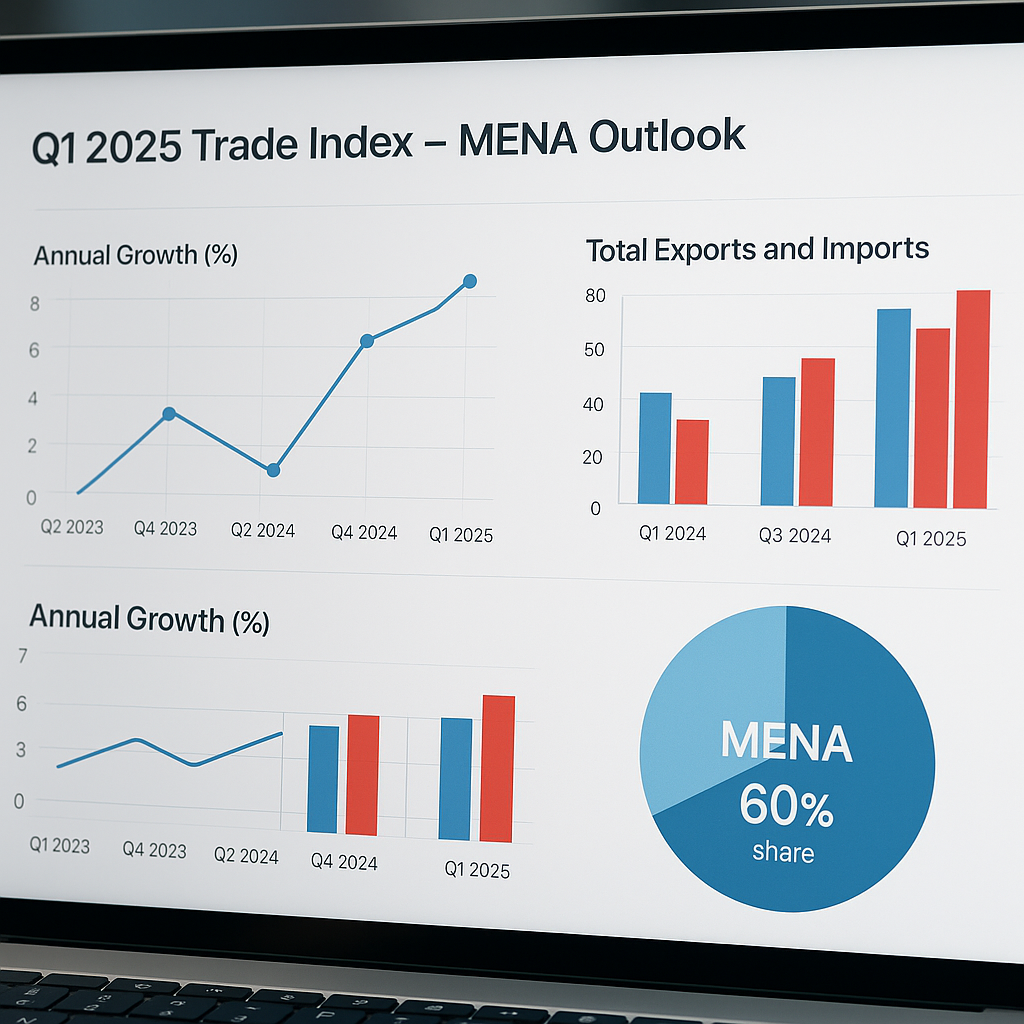
The first quarter of 2025 brought a notable 6.2% increase in trade volume across major ports in the MENA region. This growth marks a significant rebound and reflects the region’s continued adaptation to global trade shifts. Increased infrastructure investment, logistics digitalization, and regulatory improvements have all played a role in enhancing throughput and operational efficiency.
At the forefront is the United Arab Emirates, which once again leads in containerized shipments. Shorter customs lead times, the adoption of smart port solutions, and policy-driven incentives have made the UAE a model for regional trade facilitation.
Export Diversification and Policy Reform Fuel Regional Recovery
One of the most impactful trends observed in Q1 2025 is the diversification of exported goods. Countries like the UAE and Saudi Arabia have moved beyond hydrocarbons, with noticeable growth in categories such as industrial components, electronics, processed food, and consumer goods.
These changes align closely with national strategies to reduce dependency on oil, drive non-oil GDP, and create resilient trade networks. Combined with improved port performance and expanded trade agreements, the region is positioning itself as a reliable and adaptive partner in global supply chains.
Dubai’s Strategic Role as a Gateway Between Asia and Europe
Dubai continues to solidify its role as a logistics and re-export hub, bridging key trade routes between Asia, Africa, and Europe. Jebel Ali Port remains one of the busiest and most efficient in the region, supported by an ecosystem of free zones and smart logistics infrastructure.
With its geographic location and pro-business environment, Dubai is not only retaining its relevance in MENA trade but also increasing its influence on global supply chain strategies. EMH Holding views this positioning as a critical advantage for companies seeking faster, more predictable access to international markets.
